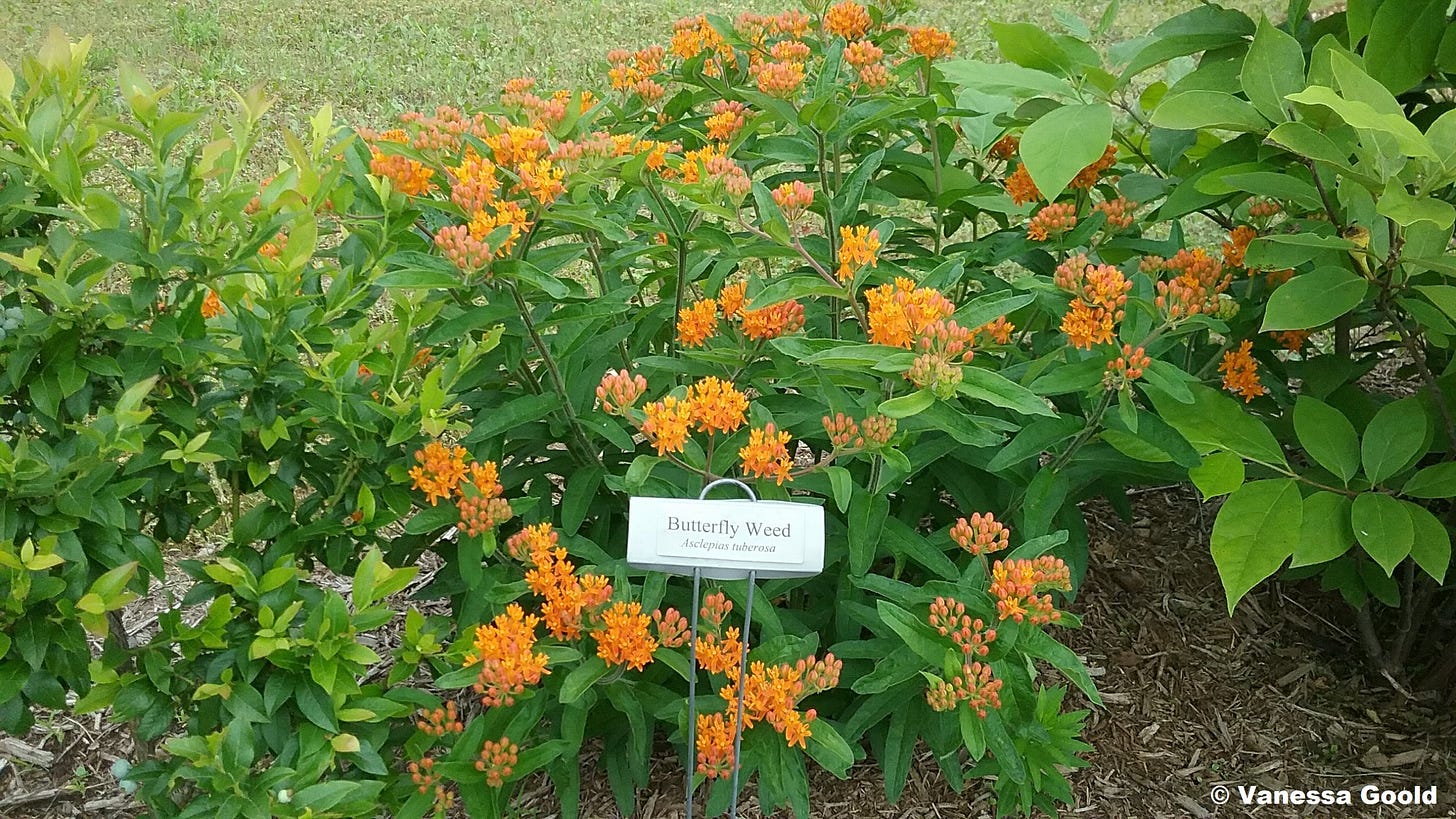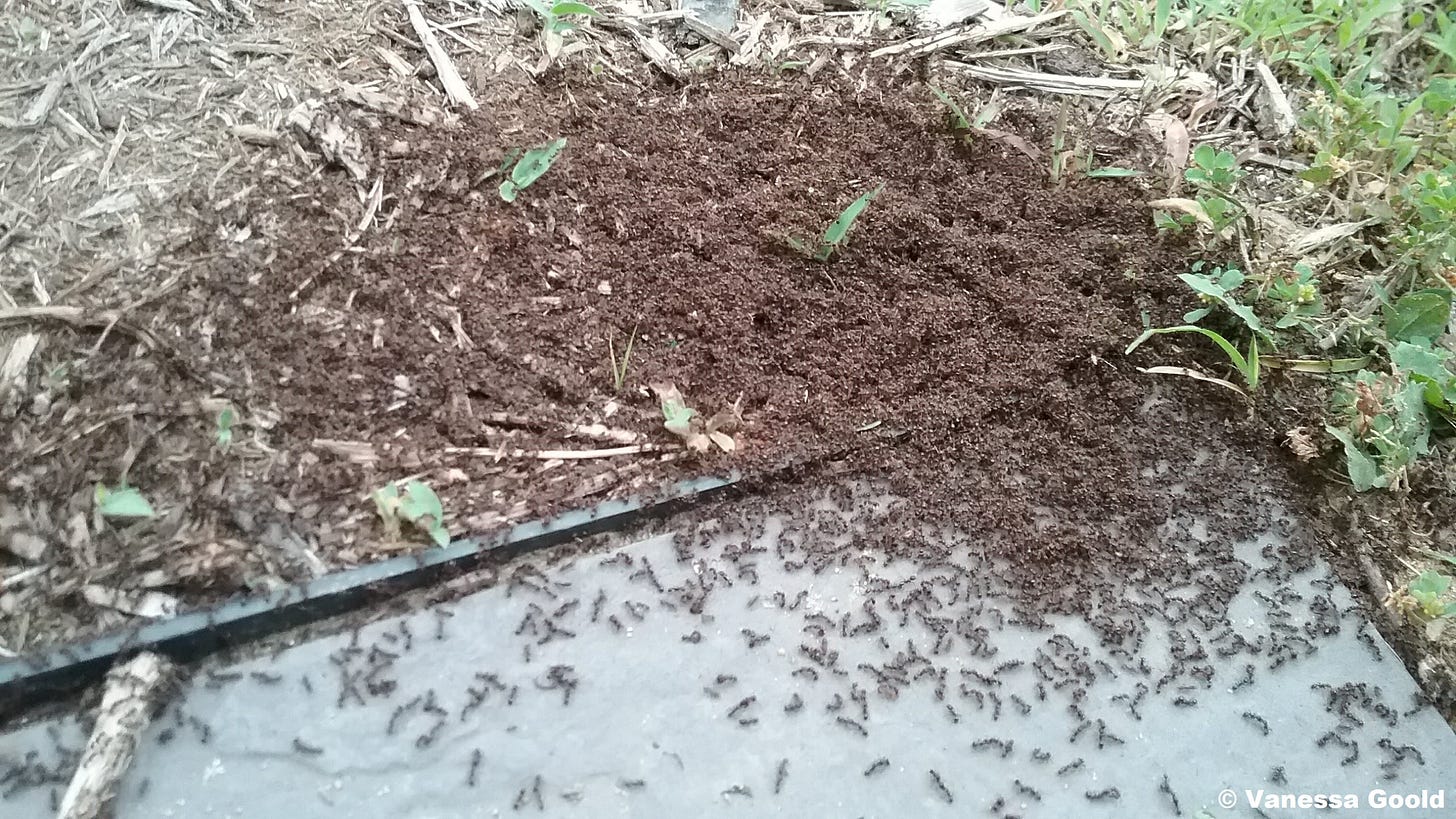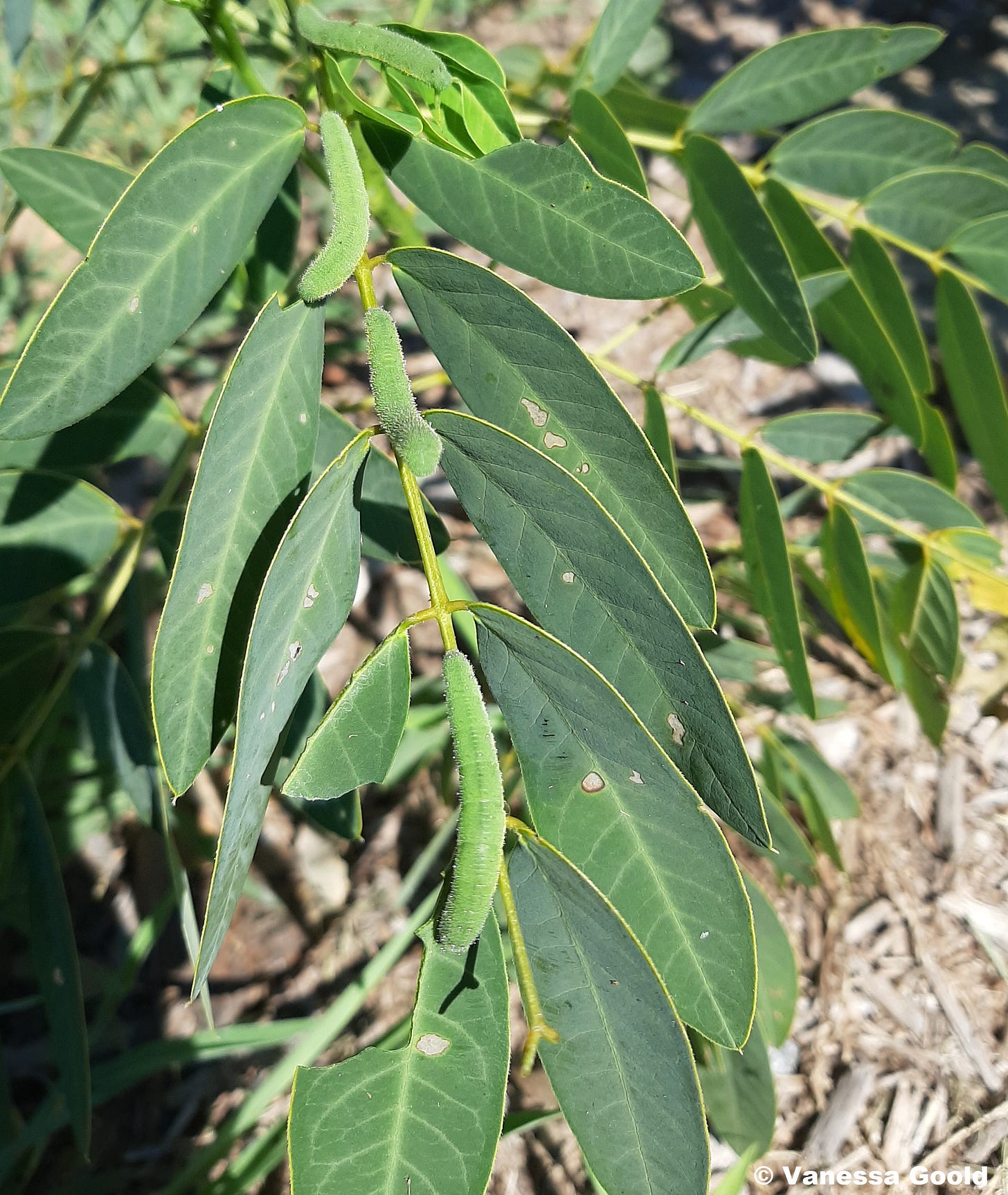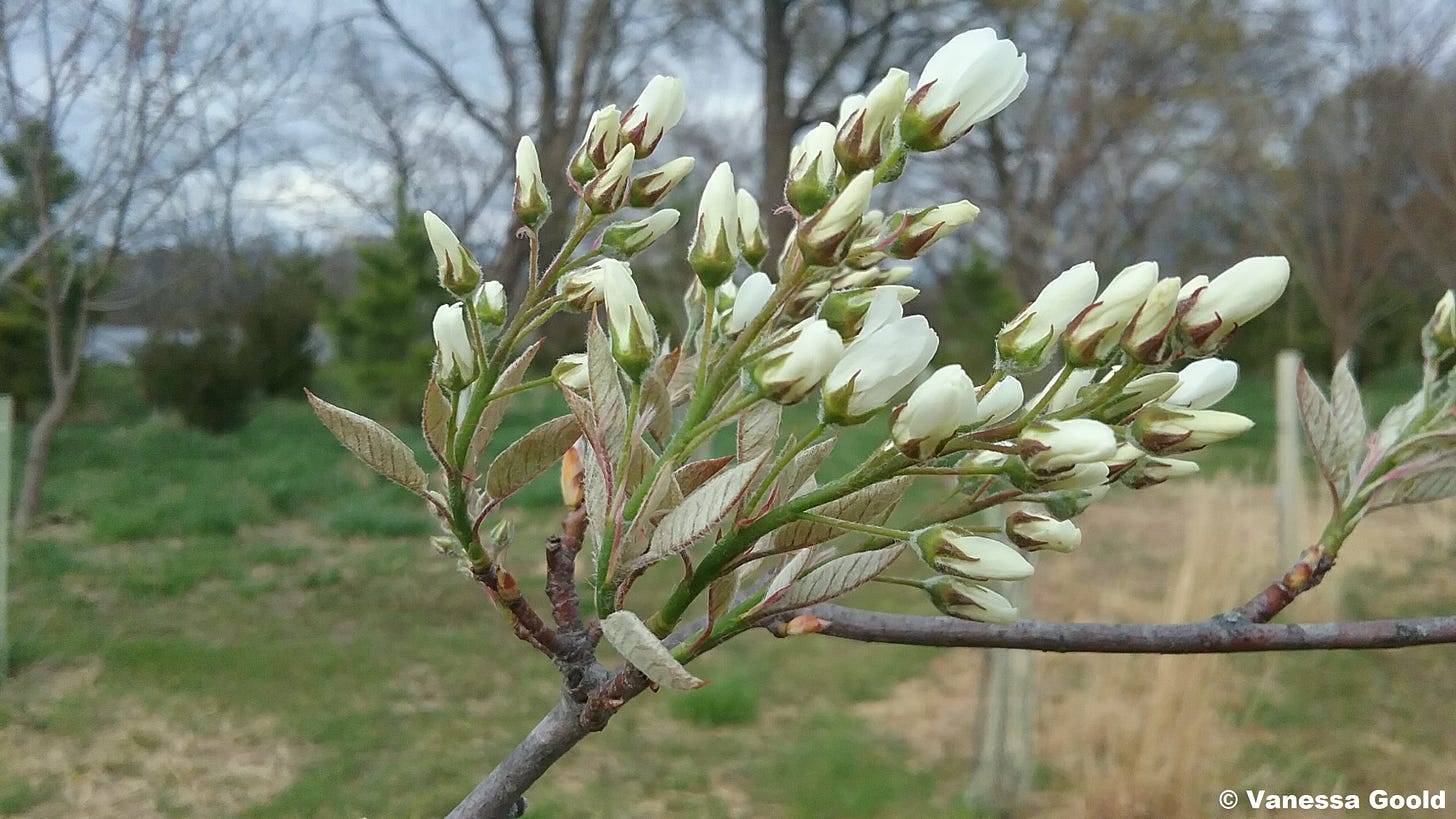Here’s a bold declaration I’m making today: doting is my favorite garden activity. Sure, I feel satisfaction from planting and dividing, and I do love a good pruning session. Weeding, in moderation, also scratches a certain itch. But doting…that’s the best.
The Oxford Dictionary’s definition of doting is to “be extremely and uncritically fond of” something. And that is the essence of it for me—or perhaps simply the starting place. I’m so fond of plants. They are beautiful and amazing!
When I talk about doting as a garden activity, what I mean is leisurely making my way out into the landscape and checking in on my plants and other garden denizens. I’m not there with any fixed objective; just saying hello and seeing how things are going. I look to see if that columbine is fluffing up nicely yet, how the buds on the viburnum are coming along, whether that swamp milkweed really is going to survive even though it’s in a rather dry location.
I might notice an iridescent beetle I’ve never seen before, or an ant swarm. Maybe I’ll hear the cheep-cheep-cheep of baby birds in a nest, or see the first hummingbird of the year.
Real reasons to dote
Pure enjoyment ranks as my number one reason to dote. Why plan and scheme and sweat and toil if you leave no time to enjoy your garden? I see reels and memes all the time showing gardeners ruefully depicting their efforts to pause for a cup of coffee on the patio, then hopping up to “deadhead one thing” and getting sucked into tasks for four more hours. I get the humor, but maintain that doting requires its own sacred time, and it doesn’t include deadheading, weeding, clipping, tidying, or digging.
A close second to enjoyment (and highly correlated) is learning. When I go out and just look at things, I’m consciously and unconsciously making mental notes and drawing connections. Maybe I’ll see that the orange coneflower and the blazing star make a nice yellow and purple color foil, and then I’ll think to myself, okay, so those two plants pair well together with complementary forms, and they’re blooming simultaneously, and it’s now late July. Check!
Or perhaps I’ll note the first monarch caterpillars on some milkweed. A few weeks later, the Joe-Pye-weed is in full bloom and covered with adult monarchs sipping nectar, just when they need it. Another connection made.
Doting is the epitome of experiential learning. When you take time to poke around, you almost can’t help but learn something. And that’s very edifying. Concepts stick in your head better when you experience them firsthand. Even when you have learned about a phenomenon theoretically, you still say, “A-ha!” when you see it play out in real life. I’m not saying that you can’t learn while you are working on tasks, but if you give yourself time to mosey, you might see and fully process more.
Related to learning, I believe that doting helps you to become a better gardener. It gives you time to appreciate what’s going on in the garden, consider your past decisions, and contemplate different ones. You also might notice more nuances in plant performance or wildlife interaction and be able to make changes that result in greater success.
Finally, doting in the garden helps to cultivate a sense of awe and discovery. We all need more awe in our lives. By taking time to slow down and simply appreciate what’s happening in the moment, it’s easy to cultivate that sense of wonder and curiosity.
One distinction I should add is that, at least for me, I try not to be critical when I’m out doting. It’s not to evaluate my garden’s performance in the sense of judging my success or failure as a gardener and co-creator. It’s simply to look, listen, touch, and take note.
A few tips on doting
It feels a little odd to give instructions or advice on how to “do” doting. Nonetheless, I suspect some folks might remain unfamiliar with the practice!
So, here goes:
Set aside a little time, maybe an hour, maybe one day a week when you decide you’re going to do NO gardening tasks; simply dote. Carrying a hot or cold beverage is optional but potentially enhancing!
You can do walking doting or sitting doting, or a combination of the two. If walking, go slowly and pause often to let your eyes, ears, nose, and fingertips explore everything in the vicinity. Look closely. Sitting or standing still can be rewarding too, because you might notice more small creatures moving. Birds and other animals may move through the space if you stay still long enough.
Try doting at different times of day and see what’s noticeable in the morning, at mid-day, or in the evening.
Keep doting throughout the year, so that you soak in the changes that occur during the growing season and when things are mostly dormant. There is a lot to be learned in winter. Early spring doting can be some of the most uplifting, because you’ll witness the first little buds swelling, note the early shoots greening up, and begin to find animals moving around. It’s exciting!
Dote alone or with companions! Your own solitary doting routine allows for deeper focus and appreciation, perhaps. Maybe it becomes a form of meditation or personal learning. However, inviting a family member or friend along can also be enriching because we all notice different things. Then the noticing is doubled. My family has always been big on giving “garden tours” and I think this is analogous. Sharing your insights with each other; giving and receiving tips and inspiration; exchanging ideas and feedback are all important parts of ecological gardening. Have fun with it: you could organize a little progressive neighborhood garden tour where the group moves from one property to the next. It doesn’t have to be formal or fancy, just an opportunity to learn from each other and have fun doing so.
Will you try it?
I’ve made my case for the emotional, practical, spiritual, and even social benefits of doting on your plants. It seems to me that there is a whole world out there in one’s garden to be discovered and appreciated. And it would be a shame to miss it.
So let me know in the comments: do you already have a doting routine? If not, will you be giving it a try?







Nice depth of field on the galls.
adding the word 'doting' to my new vocab list! i find doting alone, in silence, has allowed me to take in more of my surroundings and be more aware.